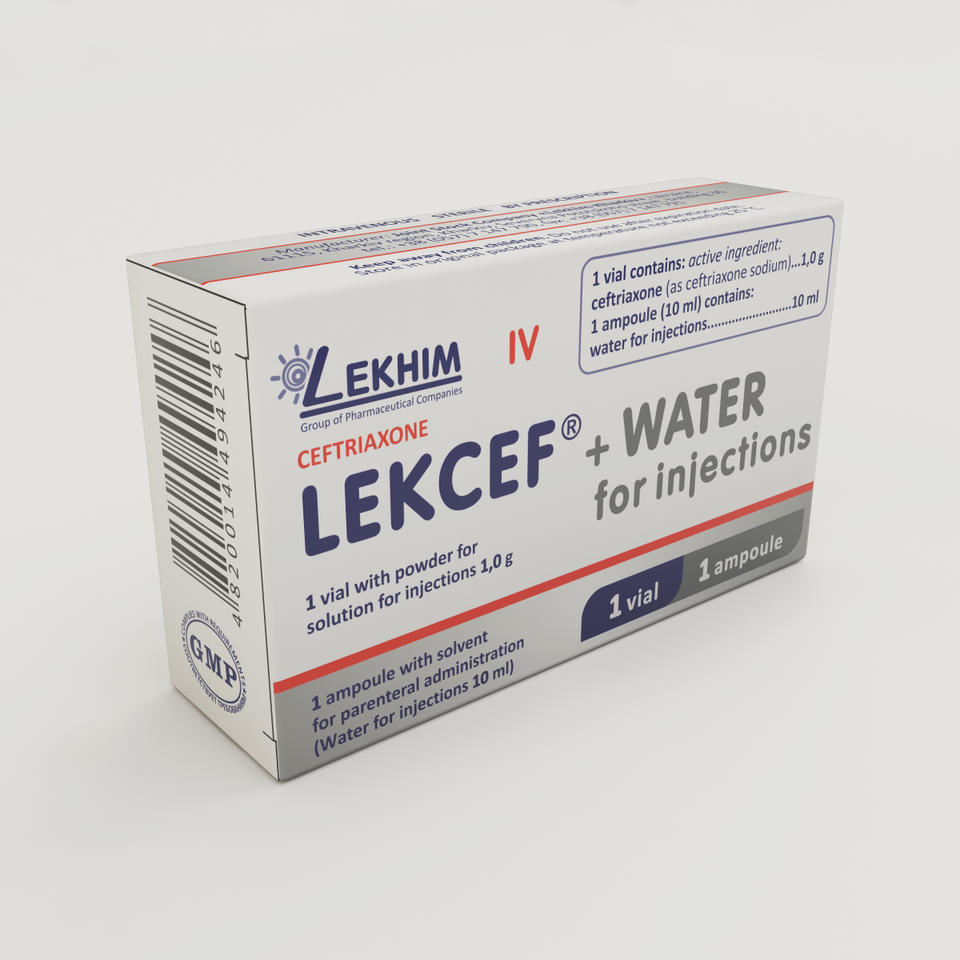
Lekcef + Water for injections
General properties
Antibacterials for systemic use. Other beta-lactam antibiotics. Third-generation cephalosporins. Ceftriaxone.
Treatment of infections whose pathogens are sensitive to ceftriaxone:
-
respiratory tract infections, especially pneumonia, and ear, nose and throat infections;
-
intra-abdominal infections (peritonitis, infections of the biliary tract and the gastrointestinal tract);
-
renal and urinary tract infections;
-
genital infections, including gonorrhoea;
-
sepsis;
-
infections of bones, joints, soft tissue, skin, and wound infections;
-
infections in immunocompromised patients;
-
meningitis;
-
disseminated Lyme borreliosis (stages II and III).
Perioperative prevention of infections in surgical procedures on the organs of the gastrointestinal tract, biliary tract, urinary tract and gynaecological procedures, but only in cases of potential or known contamination.
When prescribing ceftriaxone, it is necessary to follow the official recommendations for antibiotic therapy and, in particular, recommendations for the prevention of antibiotic resistance.
Hypersensitivity to ceftriaxone or to any other cephalosporin. History of severe hypersensitivity (e.g. anaphylactic reaction) to any other type of beta-lactam antibacterial agent (penicillins, monobactams and carbapenems).
Lekcef is contraindicated in:
– premature neonates ≤41 week taking into account the period of embryofoetal development (gestational age + chronological age)*;
– full-term neonates (≤28 days of age):
– with hyperbilirubinaemia, jaundice, or who are hypoalbuminaemic or acidotic because these are conditions in which bilirubin binding is likely to be impaired*;
– if they require (or are expected to require) intravenous calcium treatment or calcium-containing infusions due to the risk of precipitation of a ceftriaxone-calcium salt (see sections Special warnings and precautions for use and Undesirable effects).
* In vitro studies have shown that ceftriaxone can displace bilirubin from its serum albumin binding sites leading to a possible risk of bilirubin encephalopathy in such patients.
Contraindications to lidocaine must be excluded before intramuscular injection of ceftriaxone when lidocaine solution is used as a solvent (see section Special warnings and precautions for use). See Instruction for Medical Use of lidocaine, especially contraindications.
Lekcef solutions containing lidocaine should never be administered intravenously.
Pharmaceutical characteristics
White to pale yellow crystalline powder.
Store in original package at temperature not exceeding 25 °С.
Keep away from children.
